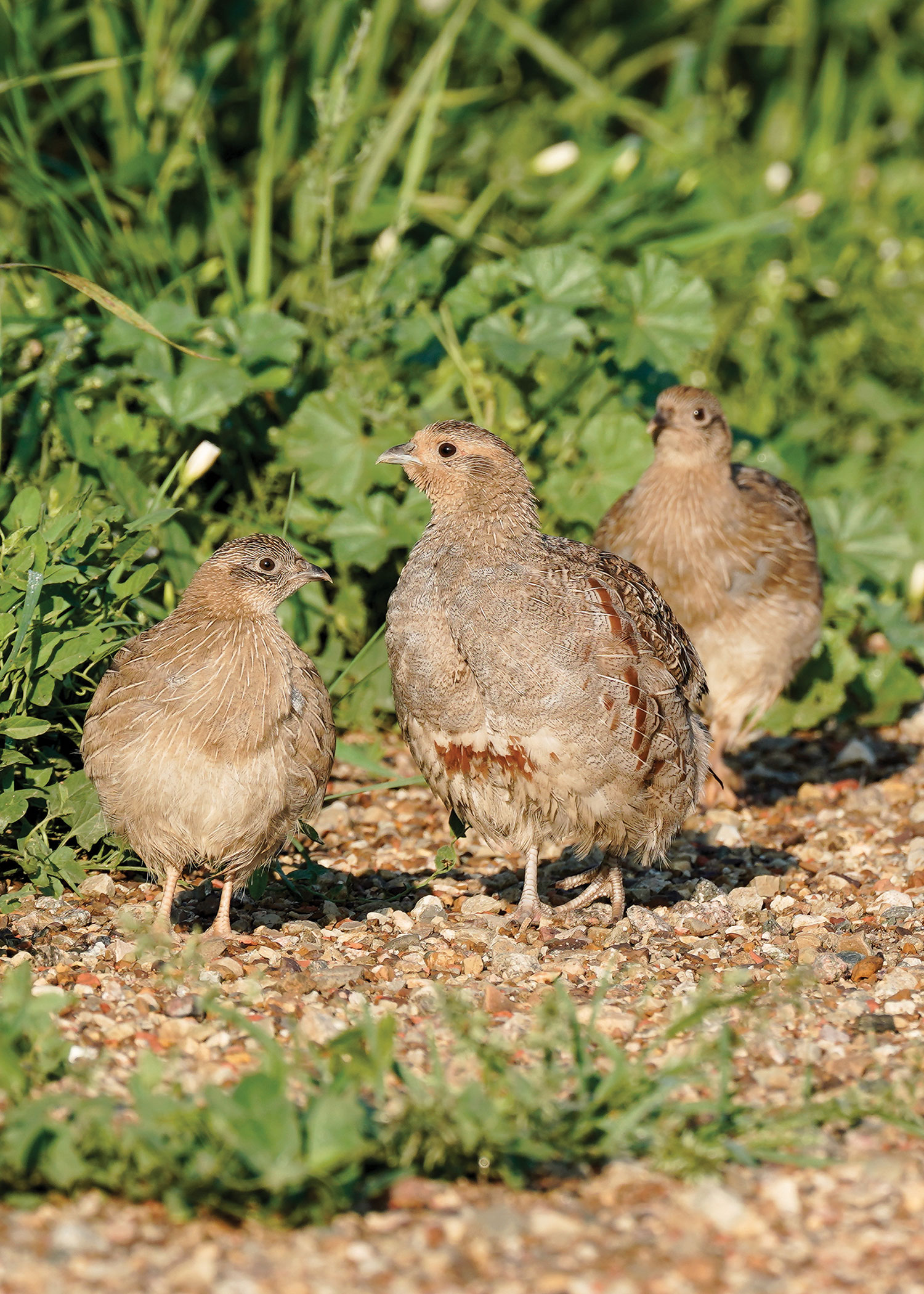Welcome News as Bird Number Climb
Ron Wilson

Last winter was hard on some of our big game species. The difficulty of dealing with feet of snow on the landscape for six months in places is reflected, for example, in the reduction of nearly 11,000 deer gun licenses compared to 2022.
This fallout is not a whodunnit. It’s not a mystery why an untold number of animals starved or died of exposure. What’s puzzling, but certainly welcome news, is how well North Dakota’s upland birds – some native to the Northern Plains, others not – fared, considering the unfriendly circumstances.
So, what the heck?
“Just how birds survived such a tough winter, especially pheasants, is one of the big questions we’ve had from people. And, you know, it’s OK to say we don’t exactly know how or why,” said Rodney Gross, North Dakota Game and Fish Department upland game management biologist. “But, we do have a few ideas based on past tough winters.”
Gross said it’s easy to compare last winter to the winter of 1997 because that was the last time North Dakota had over 100 inches of snow on the ground in places.
“The difference in those two winters is that last winter we didn’t have those prolonged 40 below temperatures that North Dakota is famous for,” he said. “And last winter we had a good warmup in January and there were some areas that cleared. So those birds, not just pheasants, could get out there, pluck around and dig up some food. Even though it was a long winter, they came through and we had a good population, good production last year, so we had kind of an excess of birds to pull through the winter.”
Also, the northwest didn’t have the snow central North Dakota had, so not everywhere was as severe, Gross added.
Heading into spring, Gross expected his pheasant crowing count runs to be mostly quiet. The noise he did expect was from his phone as people called in to report dead pheasants and other grassland birds.

Nonnative ringnecked pheasants battle the elements thrown at them last winter.
“I know that sharp-tailed grouse and Hungarian partridge can winter better than pheasants, but we still had 100 inches of snow on the ground and that’s brutal,” he said. “But I guess pheasants are tougher than I give them credit for. I wasn’t as worried about grouse because they can burrow in the snow and stuff, but I was still pretty worried.”
At times last winter, the landscape, especially in central North Dakota, looked like the surface of the moon. You couldn’t see the top of the grass. Stubble fields were buried, and it was a wonder what pheasants were eating to get by. And with cattail sloughs packed with snow, where were birds hunkering to endure the elements?
“About that time, everyone has two crowing count runs in already, and I’m looking at the data, comparing, and thinking in my head, that even on my run, I think I heard more than I did last year,” Gross said. “And you go back and look and see that was indeed the case. And then you look at other people’s and I’m finding increases. If I were a betting man going into spring, I would have a lot less money because I wouldn’t have bet this would have been the case.”
Another thing Gross wouldn’t have bet on is the continued rise of Hungarian partridge. The last two to three years he said talk was that it was unlikely that partridge numbers would get any better that they were then.
“Well, they proved us wrong, and they did better again this year. Partridge numbers are tied with an all-time high, dating all the way back to 1991,” Gross said. “I think we need to start telling people if partridge are on their bucket list, it’s time to come to North Dakota because it shouldn’t get much better. Like I said, we’ve been saying it wasn’t going to get any better, but here we are.”
Huns respond best, Gross said, during drier conditions, and these birds started their rebound in 2020, a drought year.
“Partridge nest later in the season compared to sharptails and pheasants. So, we’re getting into July where their peak hatch is, and what happens during a drought, a grasshopper explosion. Well, it’s pretty simple, when you hatch and you don’t have any insects to eat, you’re not going to survive. But if you hatch during a locust plague, you’re golden,” he said. “There’s food everywhere, and when you can have a clutch of 20 as partridge can and your survival is going to be that good, it doesn’t take very long in the numbers game for the population to come back up.”
Upland Game Bird Survey
North Dakota’s roadside surveys conducted in late July and August indicate pheasant, Hungarian partridge and sharp-tailed grouse numbers were up.


